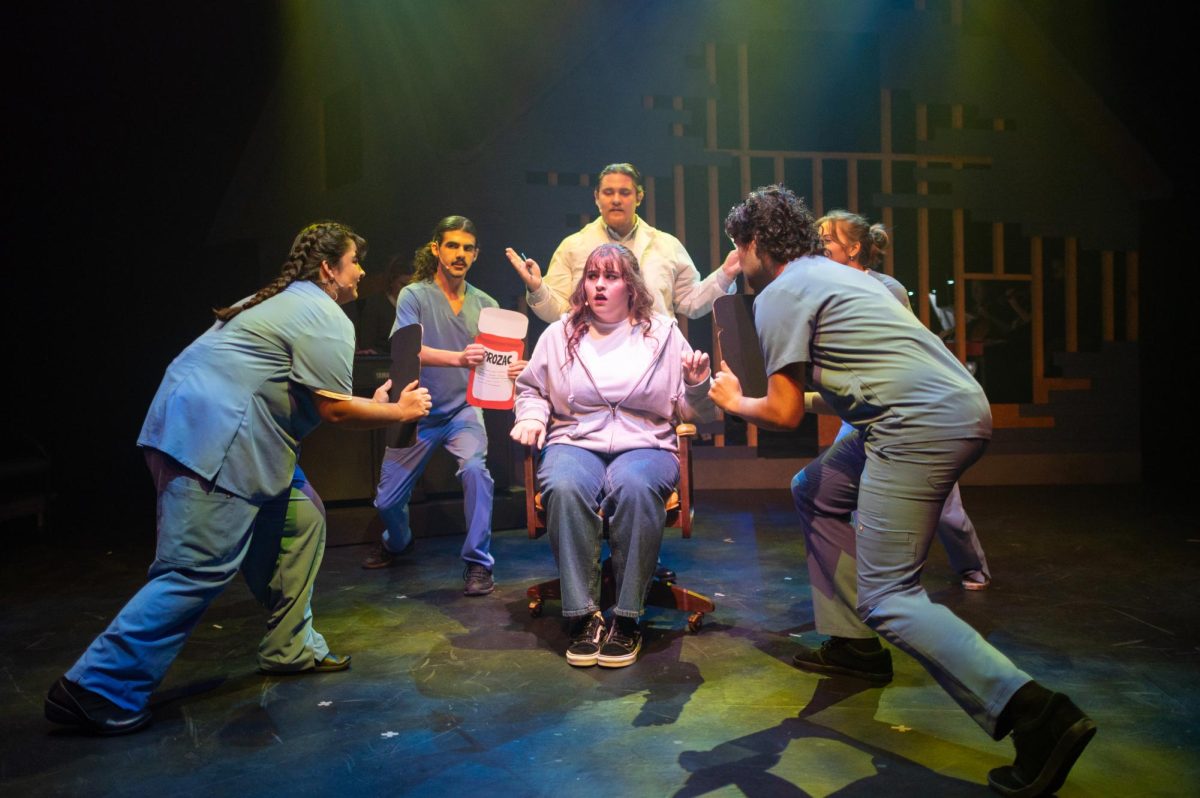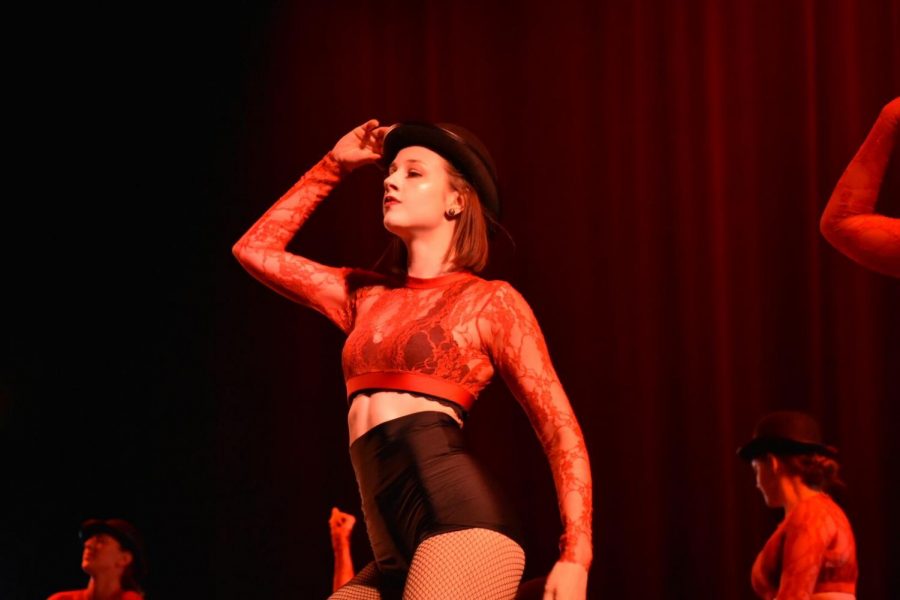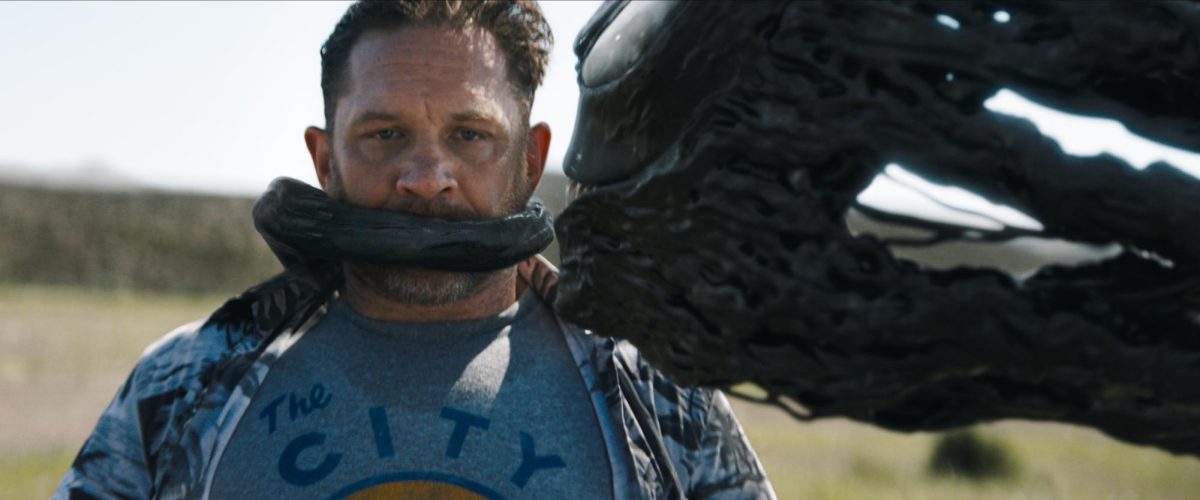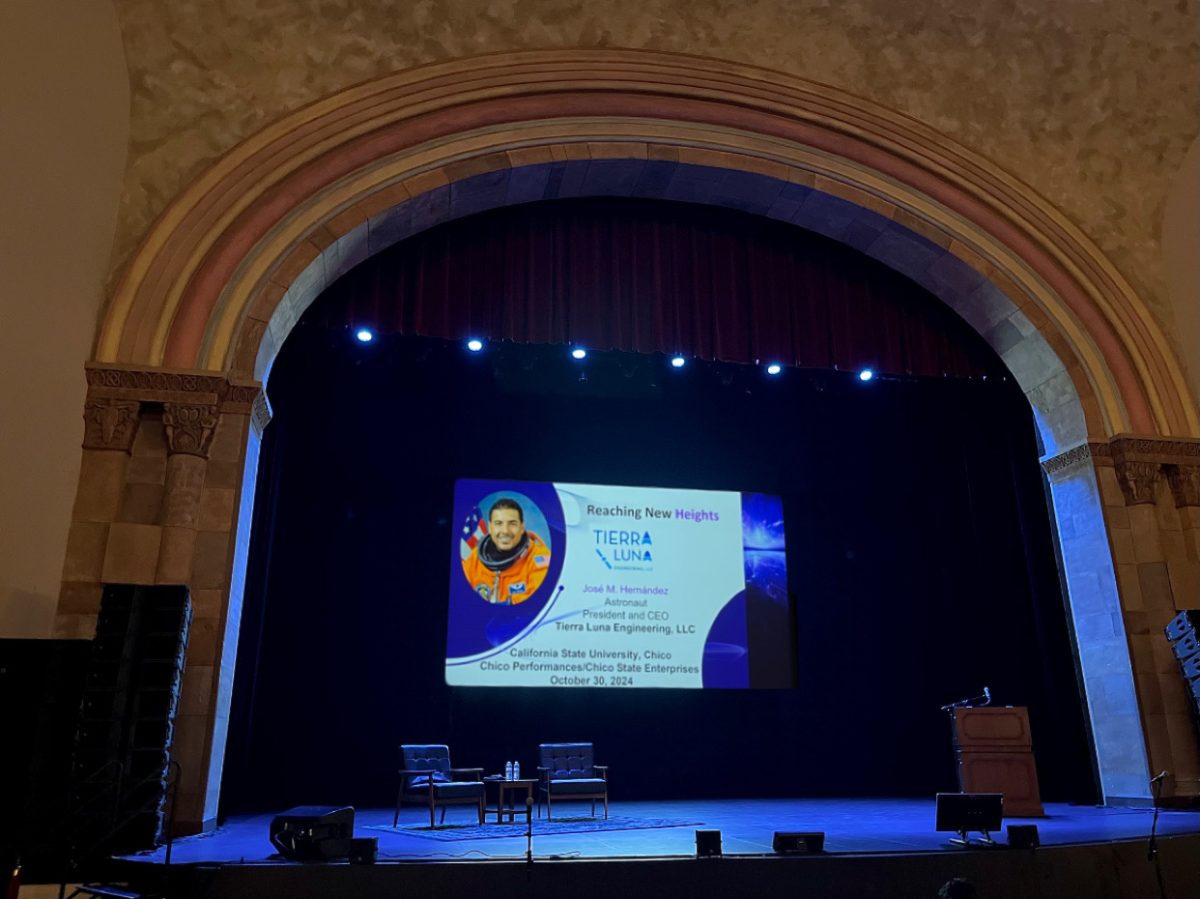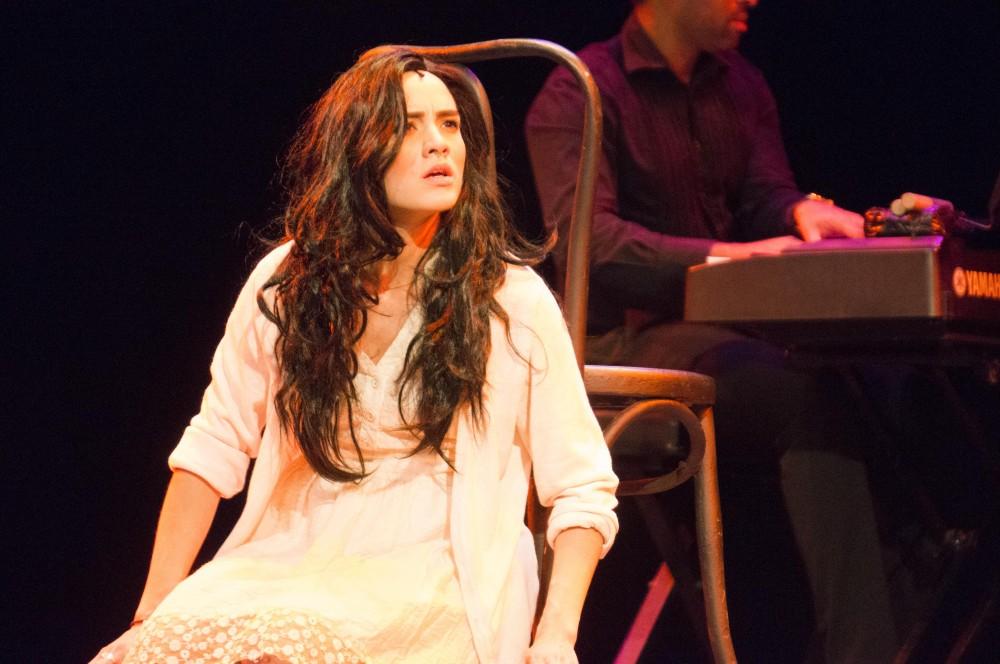
A Salvadoran woman in a bloodied white dress crouches alone in a thicket deep in the jungle outside of her village, El Mozote, desperately silent and completely still.
Tears flow down her cheeks as she wipes them away with one hand while the other covers her mouth. She can only think about her daughter.
Rufina Amaya was one of three women portrayed in the illuminating play “Tres Vidas” Tuesday in the Bell Memorial Auditorium. The sole survivor of the 1981 El Mozote massacre was played by Cristina Isabel Lucas, who also starred as painter Frida Kahlo and poet Alfonsina Storni.
The performance, presented by A.S. Productions in celebration of Hispanic Heritage Month, seemed at first like it would just be a random series of biographical explanations of three women’s lives. The smartly arranged and acted performance, however, hit at the heart of who these women were and succeeded in conveying that to the audience.
The play began with the story of Kahlo, a famous Latin-American painter. Lucas’ version of Kahlo was playful and funny, but serious when necessary.
Lucas portrayed Amaya in the second scene after a brief intermission, which seemed to have come a little too soon. This was easily the most powerful story because of the pain and loss Amaya endured, but it was also the most difficult in which to tell what was happening on stage.
This is because the props used in the one-woman show were a table, shot glasses, paint brushes used only for the first scene and a small dining chair. The chair had to be used as anything Lucas needed to set a scene.
The lack of physical representation and visuals made the scenes a tad weaker than they could have been, but Lucas, a professional actress and beautiful singer based in New York City, delivered expertly anyway. The message of each scene still came across, even though it was challenging at times to understand what she was doing.
Because “Tres Vidas” is a chamber music theater work, music was featured for much of the play. Behind Lucas was the Core Ensemble: Ju Young Lee on an electric cello, Byron Sean on piano and Michael Parola on various percussion instruments, including xylophone and bongos.
The excellent musicians of the Ensemble paired perfectly with Lucas. When she wasn’t singing, sometimes the music would play and her character would just sit and listen, adding a sort of concert feel to the production.
The last scene told the story of Storni, an influential Argentinian poet. Lucas portrayed her in her final hours as a dynamic character, confident but secretly concerned with the opinions of others.
“Tres Vidas” was an enlightening experience and a good introduction to important women that anyone interested in history, culture and captivating stories would find worthwhile.
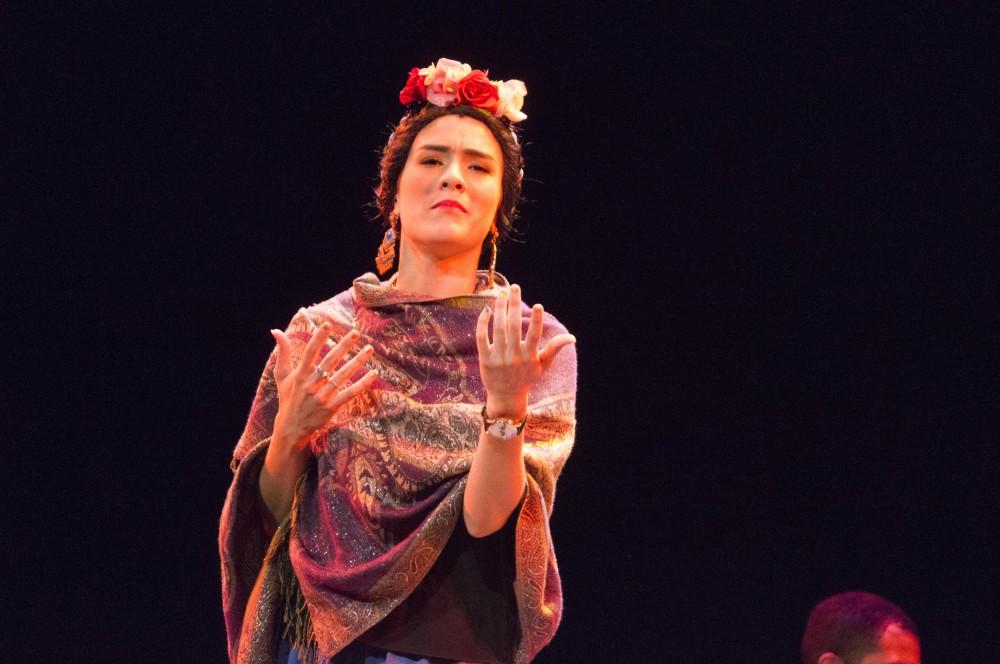
Trevor Whitney can be reached at [email protected] or @nicegrandmas on Twitter.






